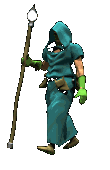إقترح ترجمة لهذا النبات الطبي Abies concolor - (Gordon.&Glend.)Lindl. ex Hildebrand. Colorado Fir
 إقترح ترجمة لهذا النبات الطبي Abies concolor - (Gordon.&Glend.)Lindl. ex Hildebrand. Colorado Fir
إقترح ترجمة لهذا النبات الطبي Abies concolor - (Gordon.&Glend.)Lindl. ex Hildebrand. Colorado Fir
Abies concolor -
(Gordon.&Glend.)Lindl. ex Hildebrand.
Colorado Fir

Physical Characteristics
icon of man icon of decid tree An evergreen Tree growing to 45m by 8m at a fast rate.
It is hardy to zone 4 and is not frost tender. It is in leaf all year, in flower in April, and the seeds ripen from September to October. The flowers are monoecious (individual flowers are either male or female, but both sexes can be found on the same plant) and are pollinated by Wind.
The plant prefers light (sandy), medium (loamy) and heavy (clay) soils and can grow in heavy clay and nutritionally poor soils. The plant prefers acid and neutral soils. It can grow in full shade (deep woodland) semi-shade (light woodland) or no shade. It requires dry or moist soil.
Habitats
Woodland Garden; Canopy;
Edible Uses
None known
Medicinal Uses
Plants For A Future can not take any responsibility for any adverse effects from the use of plants. Always seek advice from a professional before using a plant medicinally.
Antirheumatic; Pectoral; Poultice; TB.
The pitch from the trunk has been used as an antiseptic poultice for cuts, wounds etc[257]. An infusion of the pitch, or the bark, has been used in the treatment of TB[257] An infusion of the foliage has been used in a bath for relieving rheumatism[257]. An infusion of the pitch and leaves has been used in the treatment of pulmonary complaints[257].
Other Uses
Dye; Wood.
A tan coloured dye can be obtained from the bark[257]. Wood - very light, not strong, coarse grained, soft, not durable. Used mainly for pulp, cases etc[46, 61, 82]. It is sometimes used in framing small houses but is not strong enough to be used in larger buildings[229]. The wood lacks a distinctive odour and so does not impart a flavour to items stored in it. Thus it can be used for making tubs for storing food items[229].
Scented Plants
Leaves: Crushed
The crushed leaves have a strong lemony scent.
Cultivation details
Prefers a good moist but not water-logged soil[1]. Grows well in heavy clay soils. Plants are very shade tolerant but growth is slower in dense shade[81]. Intolerant of atmospheric pollution[1]. Prefers slightly acid conditions down to a pH of about 5[200]. Prefers growing on a north-facing slope[200]. Trees succeed on poor dry sites in the wild[155]. Trees are shallow rooted and therefore liable to be wind-blown in exposed sites[155]. Trees grow almost as well in S. Britain as they do in cooler areas of the country[11]. They are at their best in the Perthshire valleys of Scotland and in N.E. England, trees in the south and east of the country tend to be thin in the crown and soon lose their shape. Trees in the west grow better but also lose their shape after a while[11, 185]. New growth is from mid-May to July and trees are virtually never damaged by late frosts or aphis[1, 185]. Most trees of this species that are grown in Britain are in fact the sub-species A. concolor lowiana. (Gordon.)Lemmon. This form tends to grow better in Britain than the type. There are 2 basic forms of this sub-species, those from the north of the range are vigorous in height growth whilst the southern form is vigorous in girth growth[185]. They both have a potential for forestry use in Britain[185]. Trees should be planted into their permanent positions when they are quite small, between 30 and 90cm in height. Larger trees will check badly and hardly put on any growth for several years. This also badly affects root development and wind resistance[200]. Plants are strongly outbreeding, self-fertilized seed usually grows poorly[200]. They hybridize freely with other members of this genus[200]. A very ornamental tree[1]. The crushed leaves have a strong lemony scent[185].
Propagation
Seed - sow early February in a greenhouse or outdoors in March[78]. Germination is often poor, usually taking about 6 - 8 weeks[78]. Stratification is said to produce a more even germination so it is probably best to sow the seed in a cold frame as soon as it is ripe in the autumn[80, 113]. The seed remains viable for up to 5 years if it is well stored[113]. When large enough to handle, prick the seedlings out into individual pots and grow them on for at least their first winter in pots. Plant them out into their permanent positions in late spring or early summer, after the last expected frosts. Alternatively, if you have sufficient seed, it is possible to sow in an outdoor seedbed. One report says that it is best to grow the seedlings on in the shade at a density of about 550 plants per square metre[78] whilst another report says that they are best grown on in a sunny position[80].
(Gordon.&Glend.)Lindl. ex Hildebrand.
Colorado Fir

| Author | (Gordon.&Glend.)Lindl. ex Hildebrand. | Botanical references | 11, 60, 200 |
| Family | Pinaceae | Genus | Abies |
| Synonyms | Picea concolor - Gord. | ||
| Known Hazards | None known | ||
| Range | South-western N. America - Oregon to California, to Arizona and New Mexico. | ||
| Habitat | Found on a wide range of soils, but preferring moist soils with a humid climate and a long winter from 700 metres to 3,400 metres[229]. | ||
| Edibility Rating | 0 (1-5) | Medicinal Rating | |
Physical Characteristics
icon of man icon of decid tree An evergreen Tree growing to 45m by 8m at a fast rate.
It is hardy to zone 4 and is not frost tender. It is in leaf all year, in flower in April, and the seeds ripen from September to October. The flowers are monoecious (individual flowers are either male or female, but both sexes can be found on the same plant) and are pollinated by Wind.
The plant prefers light (sandy), medium (loamy) and heavy (clay) soils and can grow in heavy clay and nutritionally poor soils. The plant prefers acid and neutral soils. It can grow in full shade (deep woodland) semi-shade (light woodland) or no shade. It requires dry or moist soil.
Habitats
Woodland Garden; Canopy;
Edible Uses
None known
Medicinal Uses
Plants For A Future can not take any responsibility for any adverse effects from the use of plants. Always seek advice from a professional before using a plant medicinally.
Antirheumatic; Pectoral; Poultice; TB.
The pitch from the trunk has been used as an antiseptic poultice for cuts, wounds etc[257]. An infusion of the pitch, or the bark, has been used in the treatment of TB[257] An infusion of the foliage has been used in a bath for relieving rheumatism[257]. An infusion of the pitch and leaves has been used in the treatment of pulmonary complaints[257].
Other Uses
Dye; Wood.
A tan coloured dye can be obtained from the bark[257]. Wood - very light, not strong, coarse grained, soft, not durable. Used mainly for pulp, cases etc[46, 61, 82]. It is sometimes used in framing small houses but is not strong enough to be used in larger buildings[229]. The wood lacks a distinctive odour and so does not impart a flavour to items stored in it. Thus it can be used for making tubs for storing food items[229].
Scented Plants
Leaves: Crushed
The crushed leaves have a strong lemony scent.
Cultivation details
Prefers a good moist but not water-logged soil[1]. Grows well in heavy clay soils. Plants are very shade tolerant but growth is slower in dense shade[81]. Intolerant of atmospheric pollution[1]. Prefers slightly acid conditions down to a pH of about 5[200]. Prefers growing on a north-facing slope[200]. Trees succeed on poor dry sites in the wild[155]. Trees are shallow rooted and therefore liable to be wind-blown in exposed sites[155]. Trees grow almost as well in S. Britain as they do in cooler areas of the country[11]. They are at their best in the Perthshire valleys of Scotland and in N.E. England, trees in the south and east of the country tend to be thin in the crown and soon lose their shape. Trees in the west grow better but also lose their shape after a while[11, 185]. New growth is from mid-May to July and trees are virtually never damaged by late frosts or aphis[1, 185]. Most trees of this species that are grown in Britain are in fact the sub-species A. concolor lowiana. (Gordon.)Lemmon. This form tends to grow better in Britain than the type. There are 2 basic forms of this sub-species, those from the north of the range are vigorous in height growth whilst the southern form is vigorous in girth growth[185]. They both have a potential for forestry use in Britain[185]. Trees should be planted into their permanent positions when they are quite small, between 30 and 90cm in height. Larger trees will check badly and hardly put on any growth for several years. This also badly affects root development and wind resistance[200]. Plants are strongly outbreeding, self-fertilized seed usually grows poorly[200]. They hybridize freely with other members of this genus[200]. A very ornamental tree[1]. The crushed leaves have a strong lemony scent[185].
Propagation
Seed - sow early February in a greenhouse or outdoors in March[78]. Germination is often poor, usually taking about 6 - 8 weeks[78]. Stratification is said to produce a more even germination so it is probably best to sow the seed in a cold frame as soon as it is ripe in the autumn[80, 113]. The seed remains viable for up to 5 years if it is well stored[113]. When large enough to handle, prick the seedlings out into individual pots and grow them on for at least their first winter in pots. Plant them out into their permanent positions in late spring or early summer, after the last expected frosts. Alternatively, if you have sufficient seed, it is possible to sow in an outdoor seedbed. One report says that it is best to grow the seedlings on in the shade at a density of about 550 plants per square metre[78] whilst another report says that they are best grown on in a sunny position[80].
 مواضيع مماثلة
مواضيع مماثلة» إقترح ترجمة لهذا النبات الطبي Abies alba - Mill. Silver Fir
» إقترح ترجمة لهذا النبات الطبي Abies amabilis - Douglas. ex Forbes. Red Fir
» إقترح ترجمة لهذا النبات الطبي Abies balsamea - (L.)Mill. Balsam Fir
» إقترح ترجمة لهذا النبات الطبي Abies cephalonica - Loudon. Grecian Fir
» إقترح ترجمة لهذا النبات الطبي Abies firma - Siebold.&Zucc. Momi Fir
» إقترح ترجمة لهذا النبات الطبي Abies amabilis - Douglas. ex Forbes. Red Fir
» إقترح ترجمة لهذا النبات الطبي Abies balsamea - (L.)Mill. Balsam Fir
» إقترح ترجمة لهذا النبات الطبي Abies cephalonica - Loudon. Grecian Fir
» إقترح ترجمة لهذا النبات الطبي Abies firma - Siebold.&Zucc. Momi Fir
صلاحيات هذا المنتدى:
لاتستطيع الرد على المواضيع في هذا المنتدى

 البوابة
البوابة أحدث الصور
أحدث الصور




